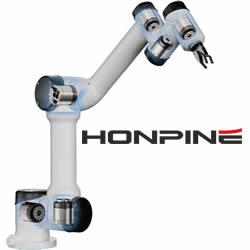Tern Tech Offshoots Show Potential for New UAS Capabilities at Sea
DARPA aiming to share breakthrough, low-cost technologies to improve launch and retrieval of unmanned aerial systems and maritime situational awareness
Tern, a joint program between DARPA and the U.S. Navys Office of Naval Research (ONR), seeks to give forward-deployed small ships the unprecedented capacity to serve as mobile launch and recovery platforms for medium-altitude, long-endurance unmanned aerial systems (UAS). These systems would provide long-range intelligence, surveillance and reconnaissance (ISR) and other capabilities over greater distances and time periods than helicopters and would require far less dedicated infrastructure resources than conventional fixed-wing manned and unmanned aircraft. As part of its individual investment in Tern, DARPA has launched two successful technology demonstration efforts that grew from Phase 1 research and are separately approaching potential transition to the Services:
* SideArm: DARPAs SideArm effort seeks to create a self-contained, portable apparatus able to horizontally launch and retrieve UAS of up to 900 pounds from trucks, ships and fixed ground facilities. The small-footprint system is designed to enable rapid setup and controlled decelerations and adapt to current and future UAS. Based on subscale tests last summer, DARPA will conduct further risk reduction and hardware testing this year, and then plans to test recovery of two different aircraft types at full scale.
* Towed Airborne Lift of Naval Systems (TALONS): DARPAs TALONS effort seeks to develop a low-cost, fully automated parafoil system to extend small ships longâ€distance communications and improve their maritime domain awareness. Towed behind boats or ships, TALONS could carry ISR and communications payloads of up to 150 pounds between 500 and 1,500 feet in altitude-many times higher than current ships masts-and greatly extend the equipments range and effectiveness. Following successful ground-based tests, DARPA will conduct at-sea testing this year and potentially transition the technology to the U.S. Navy.
"Through SideArm, TALONS and other projects, DARPA aims to make it much easier, quicker and less expensive for the Defense Department to deploy persistent ISR and strike capabilities almost anywhere in the world," said Dan Patt, DARPA program manager.
Featured Product

